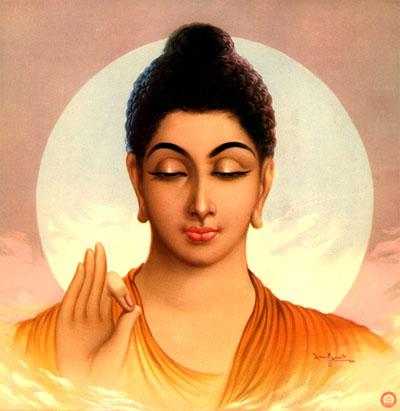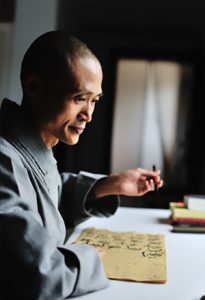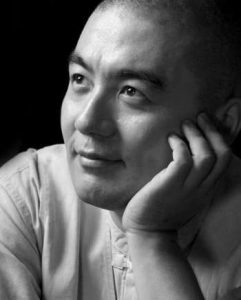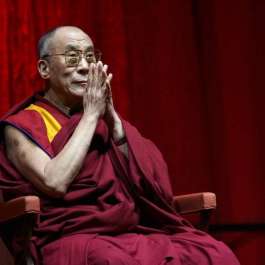
The experience of art often fulfills yearnings similar to the inspiration offered by religion. One more profound relationship between art and religion has historically been how it acts as a vehicle for expressing religious teachings. The worldly appreciation of cultural beauty is infused with a sincere belief that the aesthetic of religious art is not for its own sake, but to transmit ultimate truths.
After the Second World War, the global diaspora of Buddhist traditions meant that the religion itself became marketable as a new, exotic, and enlightened culture. The diffusion of Tibetan Buddhism and Japanese Zen through the West was as much due to Western interest in Tibetan and Japanese culture as much as Japanese and Tibetan religion. The New York-based avant-garde movement was heavily influenced by Japanese Zen ideas, and on January 12, 1951, Saburo Hasegawa wrote to Isamu Noguchi, proclaiming, ‘What used to be done by Religion has to be done alone by Art.’ Faith in religious institutions was at one of its lowest ever points, and the God is dead paradigm so touted by Nietzsche seemed to open the way for a human flourishing based on making meaning through culture and art – without religion.
Hasegawa’s proclamation proved premature, and the world moved on from the post-war consensus to a post-2008 uncertainty about many things we took for granted. However, the mystifying connection between art and religion has not lost its allure. In the 21st century, the Buddhist teachings are now instantly accessible anywhere in the developed world, and this has meant a loss of mystique and remoteness. Buddhist studies are available in many universities and colleges, and some teachers have attained the status of minor celebrities in popular culture, such as Thich Nhat Hanh or Matthieu Ricard. We have approached a stage where religious seekers are no longer interested in accepting just one side of the story. We all hunger, justifiably, for a more complete picture about Buddhism.
Hasegawa was incorrect not because art cannot inspire, but because he asserted that it could fulfill the yearnings of humanity without any reference to religion. But Lee Mei Yin, Vice Chairman for Friends of Dunhuang Hong Kong, was correct when she told me in a casual conversation that it is through the arts and culture that Buddhism finds its most effective vehicle of transmission. Buddhism has touched and informed so much that would seem unrelated, from the fabrics of Tang-era bridal attire to breathtaking sculptures, architecture, and literary genres. We cannot disseminate Buddhist teachings in isolation from the civilizations in which they were developed.Mrs. Lee was not simply speaking as a representative of a cultural heritage charity. Human society itself was traditionally always a vehicle for sharing the Dharma. Modern Buddhist leaders and writers are learning to co-opt and assimilate the promotion of cultural awareness into the calling of Buddhist dissemination, and in our 2600-year history, this can only be a thing to be encouraged.













